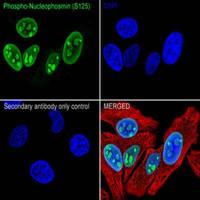Human Papillomavirus Detection by PCR and Typing by Dot-Blot
互联网
920
The papillomaviruses form a nonenveloped virion with an icosahedral capsid structure and contain a double-stranded circular DNA genome of 7800–7900 bp. The HPV genome is organized into three major regions; two protein-coding regions (1) early and (2) late-expressing genes, and (3) a noncoding upstream regulatory region (URR) (Fig. 1 ). The early region is downstream of the URR and consist of six open reading frames (ORFs) (El, E2, E4, E5, E6, and E7). El encodes a DNA binding protein involved in the regulation of viral DNA replication. E2 regulates viral DNA replication and gene expression. E4 is only expressed during the viral infection phase, and important for the maturation and replication of the virus. The function of E5 is less well known and may involve a stimulation of cell proliferation in HPV-infected cells. E5 has also shown a weak transforming activity. The E6 and E7 are coding for two oncoproteins with a high transforming activity. Upon integration into the human genome, E2 and parts of the El gene are, in general, deleted. This is followed by high levels of E6 and E7 expression. The late region contains two ORFs termed LI and L2 that code for the viral capsid proteins (1 ). Finally, the URR, or LCR long control region, contains binding sites for different transcriptional repressors and activators, and along with E5–7, is highly variable among HPV types.









